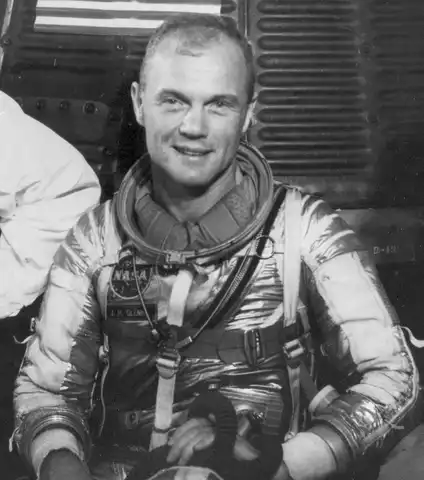On February 20, 1962, John Glenn made history by becoming the first American to orbit the Earth. This monumental achievement took place as part of NASA’s Mercury program, a crucial chapter in the ongoing space race between the United States and the Soviet Union.
Glenn’s mission, aboard the Friendship 7 spacecraft, was a pivotal moment for the United States. It not only demonstrated the nation’s growing capabilities in manned spaceflight but also boosted American morale during a time of intense competition with the Soviet Union.
The Mercury program, initiated by NASA in 1958, aimed to put an American astronaut into orbit around the Earth. The Soviet Union had already achieved this feat with Yuri Gagarin’s successful orbit in 1961, intensifying the urgency for the United States to catch up.
John Glenn, a decorated Marine Corps pilot and astronaut, was chosen as one of the “Mercury Seven” – a group of highly skilled individuals selected for their exceptional qualifications and physical endurance. Glenn’s extensive experience as a test pilot made him an ideal candidate for this historic mission.
On the morning of February 20, 1962, Glenn boarded the Friendship 7 spacecraft at Cape Canaveral, Florida. The mission was not without its challenges, as the launch had been delayed several times due to technical issues. However, on that fateful day, all systems were go.
At precisely 9:47 a.m. Eastern Standard Time, Friendship 7 lifted off from the launch pad, carrying Glenn into the unknown. The spacecraft reached a maximum altitude of approximately 162 miles and achieved a top speed of over 17,500 miles per hour.
Glenn’s mission consisted of three orbits around the Earth, with each orbit lasting approximately 88 minutes. During this time, he experienced the wonders of space and the challenges of weightlessness. Glenn meticulously documented his observations, providing valuable insights into the effects of space travel on the human body.
One of the most critical aspects of Glenn’s mission was the successful reentry into Earth’s atmosphere. As Friendship 7 approached the planet, Glenn encountered a potentially catastrophic issue with the spacecraft’s heat shield. The heat shield, which protected the capsule from the intense heat of reentry, was believed to have become loose.
Despite this perilous situation, Glenn maintained his composure and followed the instructions provided by mission control. He manually operated the controls to ensure the heat shield remained intact during reentry. His actions demonstrated not only his skill as an astronaut but also the importance of quick thinking and problem-solving in space exploration.
At 2:43 p.m., after four hours and 55 minutes, Friendship 7 splashed down safely in the Atlantic Ocean. Glenn’s successful mission was met with jubilation and celebration across the United States. He had not only completed a successful orbit of the Earth but also paved the way for future space exploration and advancements in science and technology.
Glenn’s historic achievement had a lasting impact on the United States’ space program. It showcased the nation’s determination to compete with the Soviet Union in the space race and marked a significant milestone in the ongoing quest for space exploration.
To this day, John Glenn’s mission remains a symbol of human ingenuity and the relentless pursuit of knowledge. His courage and dedication continue to inspire future generations of astronauts and scientists.
In conclusion, John Glenn’s orbit of the Earth on February 20, 1962, was a monumental event in the history of space exploration. It demonstrated the United States’ capabilities in manned spaceflight and bolstered American morale during the space race with the Soviet Union. Glenn’s successful mission paved the way for future advancements in space exploration and continues to inspire generations to reach for the stars.
SEO Excerpt:
On February 20, 1962, John Glenn became the first American to orbit the Earth aboard the Friendship 7 spacecraft. This historic mission marked a significant achievement in the space race between the United States and the Soviet Union. Glenn’s successful orbit boosted American morale and showcased the nation’s growing capabilities in manned spaceflight. Learn more about this pivotal moment in space exploration and its lasting impact on the United States’ space program.

